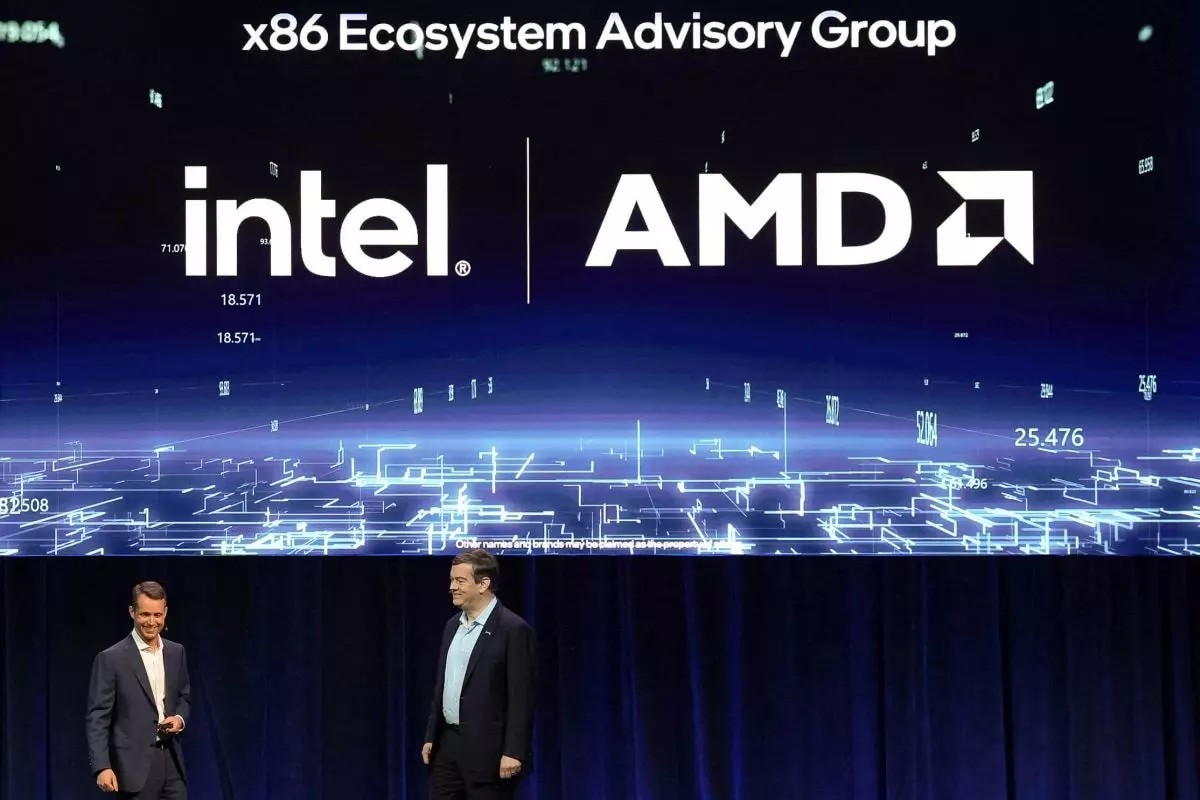In a groundbreaking move that may redefine the semiconductor landscape, Intel and AMD, two longtime rivals in the microprocessor arena, recently unveiled their collaboration during the OCP Global Summit in California. Together, they announced the formation of an x86 Ecosystem Advisory Group, designed to advance the x86 architecture—a computing framework they co-invented in the late 1970s. This partnership signals a pivotal response to the growing influence of Arm technology, whose prevalence is steadily encroaching on the established dominance of x86 processors in both personal and server computing.
For decades, x86 processors have been the gold standard in computing, particularly in PCs and data centers. Intel’s introduction of the first x86 processor four decades ago set the foundation for a market that has largely remained unchallenged until recent years. However, as Arm-powered devices, such as Apple’s M-series and Qualcomm’s Snapdragon processors, gain traction, it’s crystal clear that the competitive dynamics are shifting. Arm’s approach to chip design—coupled with their requirement that all manufacturers support Arm software—has gained significant appeal due to the seamless compatibility it offers across a vast range of devices.
The recent launch of competitive Arm solutions below the $800 mark, presenting high performance at an attractive price point, illustrates why x86 processors are increasingly facing off against this new breed of chipmakers. This landscape is further complicated by the growing projections for the Arm server market, estimated at around $5.84 billion in 2023 and expected to grow at a compound annual growth rate (CAGR) of 14.3% through 2030, as per Grand View Research.
Amid this transformative market, the x86 Ecosystem Advisory Group aims to establish a more robust environment for x86 processing through enhanced software compatibility. By collaborating closely with industry heavyweights, including Lenovo, Dell, Google, Microsoft, and HP, the group seeks to streamline the process of software development while providing improved cross-platform compatibility. At the core of their initiative is the ambition to create a “more unified set of instructions and architectural interfaces,” closely informed by feedback from the hardware and software sectors that operate within the x86 framework.
This effort is fundamental, as it not only allows Intel and AMD to pool resources and insights, but also strategically positions them to counteract Arm’s competitive advantages. The rallying of forces around this initiative underscores their commitment to maintaining x86 as the predominant architecture, crucial for applications across PCs, data centers, and embedded systems.
A significant aspect of the initiative is the collaboration between influential figures like Linux kernel creator Linus Torvalds and Epic Games CEO Tim Sweeney, who have joined the advisory group. Their expertise could be vital in influencing the future of x86-related software development. If successful, this initiative could drive faster adoption of new features, propel advances in cloud computing, and enhance the overall scalability of x86 systems.
Intel and AMD are acutely aware of the urgency of this evolution. With technology evolving at an unprecedented pace, they have articulated a need for customization, scalability, and compatibility to meet the demands of diverse customer segments ranging from businesses to gaming enthusiasts. As Intel CEO Pat Gelsinger expressed, “we are on the cusp of one of the most significant shifts in the x86 architecture and ecosystem in decades.”
The formation of the x86 Ecosystem Advisory Group represents an intriguing chapter in the tale of x86 computing. While the rivalry between Intel and AMD remains intact, their collaboration symbolizes a conscious recognition of the challenges posed by Arm technology. United under the common goal of enhancing software compatibility and promoting the x86 architecture, they are paving the way for a reimagined future in computing. As the industry watches closely, the success of this initiative may crucially determine whether x86 can retain its status as the preferred architecture amid growing competition. Time will reveal if this alliance leads to a stronger, more unified ecosystem, or whether it merely stalls the inevitable wave of change heralded by Arm’s ascent.


Leave a Reply